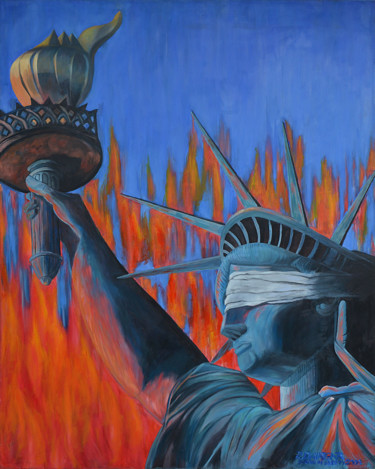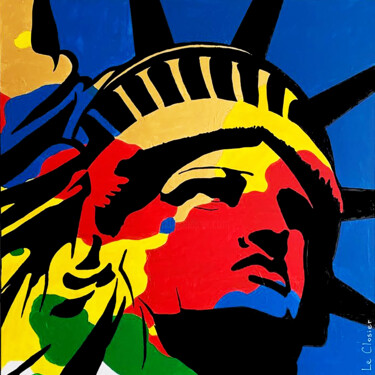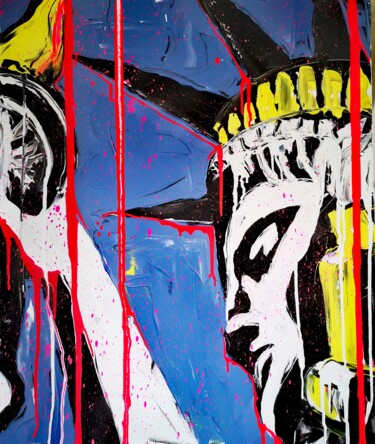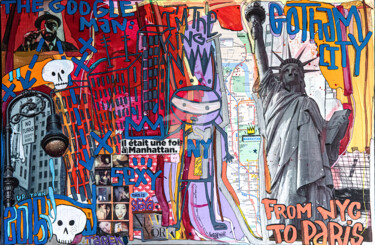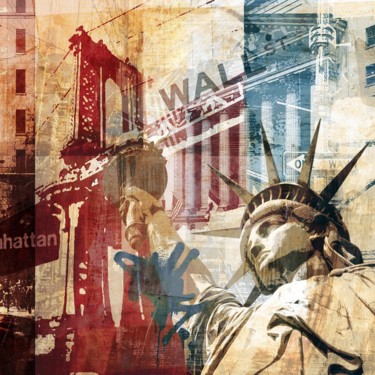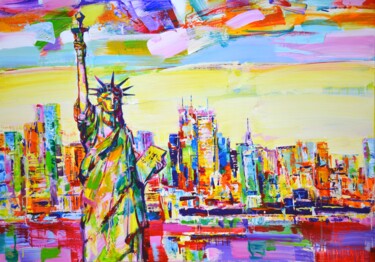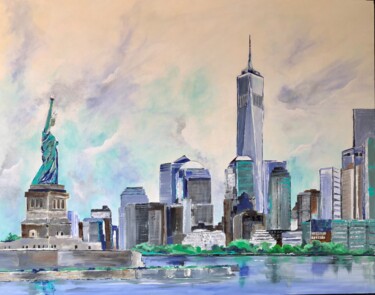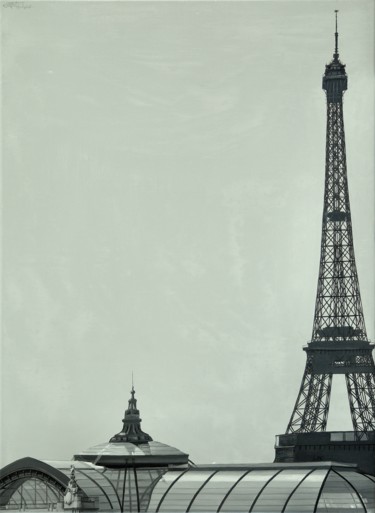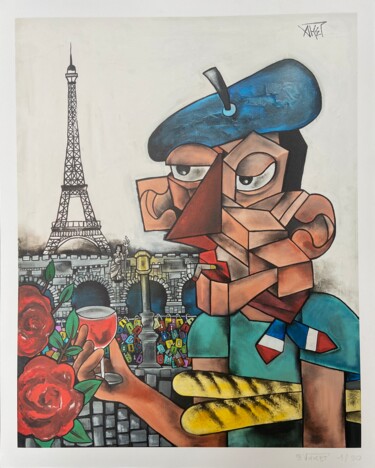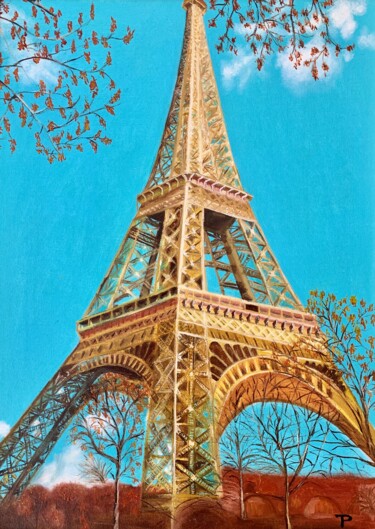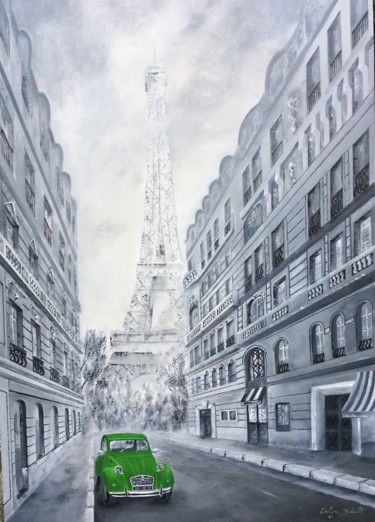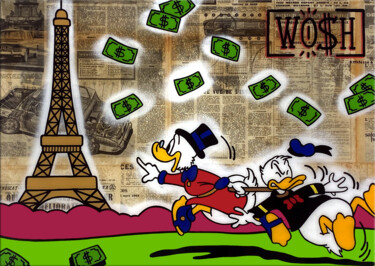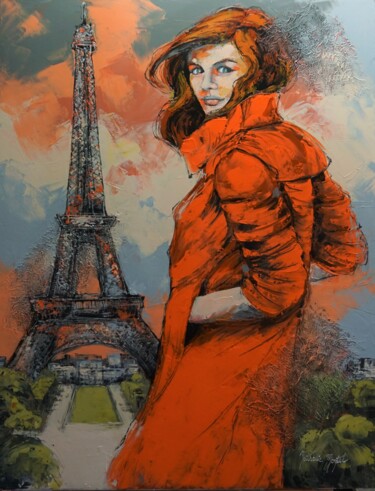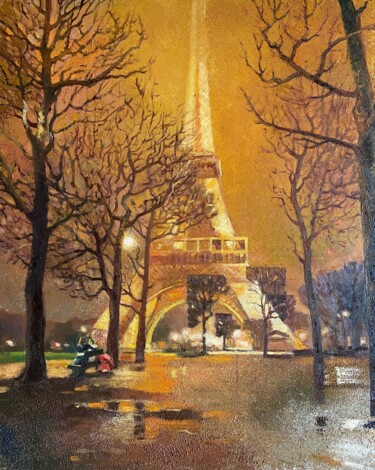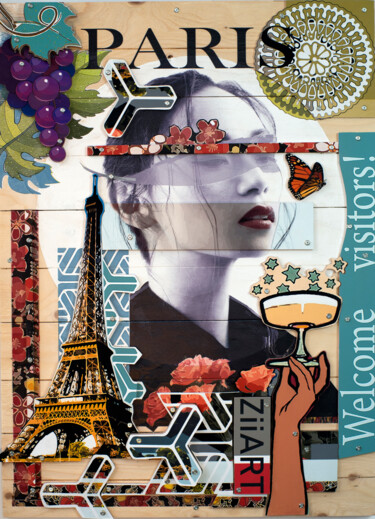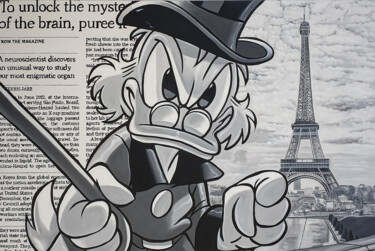 NICE TO BE THE MAGICIAN OF IRON (WHITE EDITION) (2019)Digital Arts by Per Nylén
NICE TO BE THE MAGICIAN OF IRON (WHITE EDITION) (2019)Digital Arts by Per Nylén
The Eiffel Tower
When you arrive in Paris, it's impossible not to think about taking a photo with the Eiffel Tower or capturing the mixed impression of joy, excitement, and amazement, ready to manifest in a carefully composed and solitary selfie that forever immortalizes us in front of this metallic sculpture completed in 1889. In addition, it is known that almost everyone who goes to the French capital spends hours contemplating it, admiring it from every possible angle, as if they literally want to take home a vivid memory of it, often synthesized by some themed souvenir. Nevertheless, the tower is something more than a popular symbol of the city to be endlessly reproduced, always ready to materialize in small figurines, keychains, t-shirts, etc., because its importance, as well as its "royal" presence on-site, is mainly due to its history, which, despite the fame of the structure, few know in detail.
Returning for a moment to 1887, this is the year when the construction of the Eiffel Tower began, carried out under the careful direction of Maurice Koechlin and Émile Nouguier, engineers who followed the project of the French entrepreneur and specialist in metal structures, Gustave Eiffel. The work in question was conceived by the latter in order to celebrate the centenary of the French Revolution, on the occasion of the 1889 Universal Exhibition, which took place at the Champ de Mars in the capital. The whole purpose was to assert to the whole world the power, as well as the distinct industrial capabilities, of France, to the extent that the tower, at the time becoming the tallest structure in the world, was used as the entrance to the exhibition.
However, it was not appreciated by its contemporaries, who saw it as a metal monstrosity defacing the Parisian skyline, and its demolition, scheduled for 1909, was fully desirable. This can be summed up in the famous words of the writer Guy de Maupassant, a frequent visitor to one of the restaurants in the Eiffel Tower, as it was the only place where he didn't have to see that "horrible steel monster"! Nevertheless, the Iron Lady has survived to this day, but for what reason? Certainly not aesthetics, but rather its functionality, as it proved to be very useful, especially during the war, as a platform for positioning the antennas of early radio signals. Now, let's turn to the history of art, ready to reveal how many artists considered the Eiffel Tower a noteworthy subject to capture, both in its entirety and in its various stages of construction.
 PARIS LA TOUR EIFFEL (2022)Painting by Roger Loyer (Anton)
PARIS LA TOUR EIFFEL (2022)Painting by Roger Loyer (Anton)
 TOITS DE PARIS - TOUR EIFFEL/ ARC DE TRIOMPHE (2023)Painting by Jean Rougerie
TOITS DE PARIS - TOUR EIFFEL/ ARC DE TRIOMPHE (2023)Painting by Jean Rougerie
How do artists view the Eiffel Tower?
Through the history of art, it is possible to revisit some of the construction events of the Eiffel Tower, which, expressed through the brushes of Marc Mouclier, Paul-Louis Delance, Georges-Pierre Seurat, Marc Chagall, Henri Rousseau, and Robert Delaunay, will gradually lead us to the completion of the metal structure. Regarding the tower under construction, we can refer to the first three artists mentioned above, creators of "The Eiffel Tower under construction, seen from the Conference Quay" (1888), "Eiffel Tower and Champ-de-Mars " (1889), and "The Eiffel Tower " (1889).
Marc Mouclier's first painting shows the Iron Lady completed up to the second floor, while the works of Paul-Louis Delance and Georges-Pierre Seurat capture the absence of the third level, which would also be close to the summit. Focusing on the "The Eiffel Tower" (1889) by the French master, the pointillist oil on canvas depicts the silhouette of the metal structure, designed to fill the entire canvas, while on the left, part of a tree is visible, and on the lower first floor, some buildings of difficult interpretation. Why depict this subject? Seurat saw the Eiffel Tower as an architectural triumph capable of glorifying, through its verticality, the engineering of its era, synthesized by a simple yet modern geometric structure. It was all meant as a symbol of progress, both technological and industrial, to be celebrated as a representative of French development during the years of the Second Industrial Revolution.
Moving on to the depiction of the tower in its entirety, we come to Henri Rousseau, the painter of "The Eiffel Tower" (1898), Marc Chagall, the author of "Le Pont de Passy et la Tour Eiffel" (1911), and "The Bridal Pair with The Eiffel Tower" (1938 - 1939), and Robert Delaunay, a painter who explored the subject in multiple works, such as "The Red Tower" (1911-12). Analyzing "The Bridal Pair with The Eiffel Tower" and "The Red Tower," the first masterpiece depicts the painter and his wife Bella dressed as newlyweds atop a giant rooster, which is placed in front of the blue Eiffel Tower, with the intention of identifying Paris as an undisputed romantic destination, not without references to the artist's homeland.
Regarding the second work, the painting from around 1911 is part of a series of masterpieces that Delaunay dedicated to the symbol of the French capital, captured through the language of Orphic Cubism, a more free and poetic painting movement compared to Picasso's intellectualism. In line with this perspective, the Iron Lady, a symbol of modernity for the painter, is loaded with a clear sense of movement, ready to show the metal structure from different viewpoints, aimed at finding space in a fragmented environment, where other buildings are arranged around the tower. Finally, it is the turn of the artists of Artmajeur, as it is up to them now to show us a particular vision of the subject described above.
 LE RECRUTEMENT AND THE EIFFEL TOWER (2023)Painting by Ana Smarz
LE RECRUTEMENT AND THE EIFFEL TOWER (2023)Painting by Ana Smarz
 PARIS TOUR EIFFEL (2019)Painting by Jean Mirre
PARIS TOUR EIFFEL (2019)Painting by Jean Mirre
Jean Mirre: PARIS EIFFEL TOWER
I was looking at Jean Mirre's painting, dreaming of being on the street in Paris that he depicted when, to continue my daydreaming, I ardently wished to know where the artwork was actually set. I didn't know exactly how to find out about the location, so I looked at the sign of the restaurant, which reads "Le Recrutement," hoping that it was a real place, capable of connecting my thoughts to something concrete. With this specific intent, I typed "Le Recrutement, Paris" into Google Maps, and here I am, transported to 36 Bd de la Tour-Maubourg, on a street corner where I can actually admire the tower from a distance. What I can now see in the images of the said application is rendered by Mirre in his unique artistic language, halfway between Impressionism and Fauvism, always lively with bright colors, in this case tending mainly towards sky blue and azure, with which the Iron Lady stands tall in the sky. The work of the Artmajeur painter is, however, more varied, embracing at times more abstract or expressionistic forms, all intended to be a spokesperson for the optimism that characterizes the painter as his predominant state of mind.
 SUNFLOWERS IN PARIS (2023)Painting by Vanya Georgieva
SUNFLOWERS IN PARIS (2023)Painting by Vanya Georgieva
Vanya Georgieva: SUNFLOWERS IN PARIS
The lively spring nature, captured at sunset, comes to life, most likely situated in the Champ de Mars, a famous and extensive public garden in Paris, located on the left bank, nestled between the Eiffel Tower and the École militaire. In fact, it seems that the artist lay on the park's grass armed with a palette and brushes to create an idyllic composition in which, among sunflowers, poppies, and trees, the Eiffel Tower appears, almost in the center of the composition, its height reaching the upper limit of the painting support. Sunflowers, the Eiffel Tower, and sunsets themselves are some of the artist's strong points, as she wanted to depict them all together in a single composition, which seems to be an ode to joy and carefreeness, mainly sung by the vibrancy of the colors used. As for the artist, the Bulgarian painter, specializing in mural painting, prefers to depict panoramic landscapes, portrayed with the intense hues of oil and acrylics, a mixed technique through which she strives to convey beauty, feelings, and energy, sometimes with an almost phosphorescent "vocabulary."
 PARIS JARDINS (2022)Painting by Sophie Petetin
PARIS JARDINS (2022)Painting by Sophie Petetin
Sophie Petetin: PARIS GARDENS
"Passing through the Champ de Mars, Paris with its emblematic monument, the Eiffel Tower." This is how Sophie Petetin defines the context that gave life to her painting, the result of a special passion that the artist has for both Paris and its tower, greatly enhanced by the greenery that surrounds it. The Artmajeur painter admits to being under a perpetual spell, aiming to transport her mind, along with her body and brush, often to the places mentioned above, where she has the habit of walking when she can. On these occasions, she enjoys the panoramic view, relaxing with her feet on the grass and her head held high, facing the other way, towards the tower. From instants of happiness, only joyful and carefree works can emerge, aimed at sharing serene and unforgettable moments with the viewer, having a precise and unique location: Paris and its Iron Lady. Sophie Petetin's art is indeed intended to spread the joy of living, through a combination of colors and materials that can generate a happy and poetic symphony, the result of free gestures aimed at recalling the contentment of dreams and memories, which often embrace the natural world but also modern urban life and daily life.

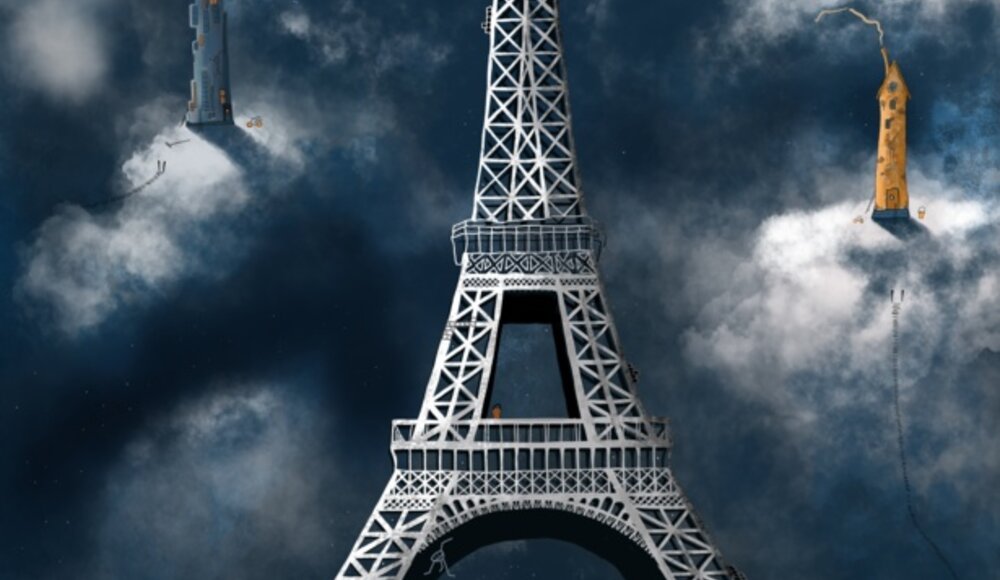
 Olimpia Gaia Martinelli
Olimpia Gaia Martinelli
